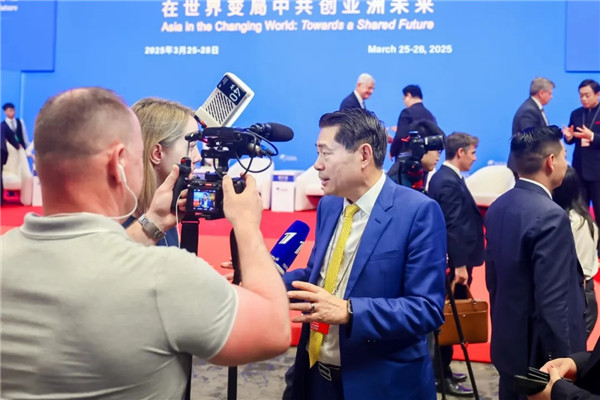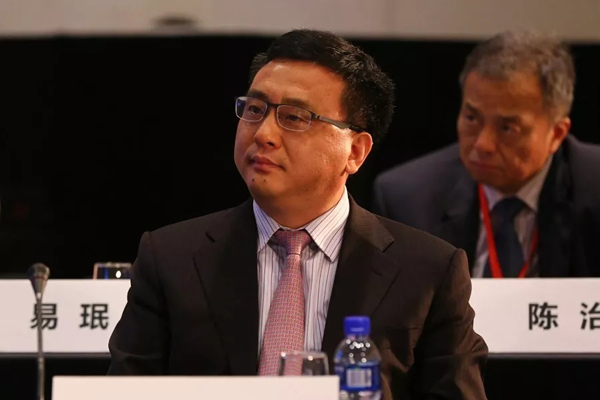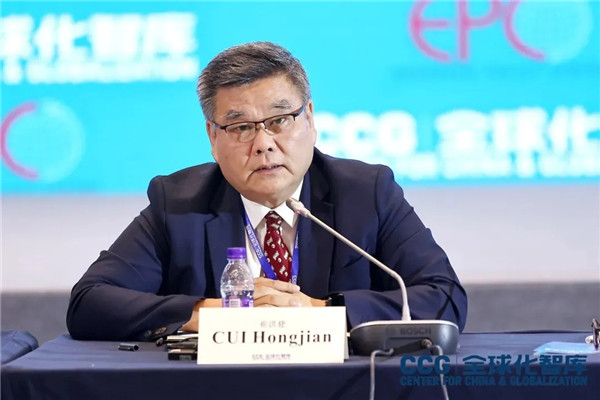胡永泰:为美中贸易冲突灭火
2018年7月9日
胡永泰,CCG学术委员会专家、美国加州大学戴维斯分校经济系教授
发自戴维斯——在2000年的时候,当时还是总统候选人的乔治·W·布什将中国称之为美国的战略“竞争对手”。至此之后的每一年,我都会在圣诞节到来时松了一口气:中美贸易战至少在未来12个月内不会爆发了。
但到了来年1月份,我的节日欢呼又会被恐惧所取代,因为助长了布什言论的紧张局势——以及他否认比尔·克林顿首选的“合作伙伴”标签的各个因素——仍未得到充分解决。同时正如我们现在所看到的那样,全球经济面临的风险在此后这些年中变得日益严峻。
而不断升级的美中贸易战其实是对美国领导人长期以来所提出的三个问题的回应:失业,技术竞争以及人们所感知到的中国对美国国家安全的威胁。
第一个担忧——美国就业向中国转移——被视为中国贸易顺差的副产品,美国通常通过呼吁人民币升值来寻求补救。但这种做法是错误的;汇率只是造成贸易不平衡的其中一个因素,任何人民币升值都不可能改变多极世界的现状。以1985年广场协议实施后的情况为例,该协议推高了日元的币值:但美国的日本商品采购量随之减少并转而从其他国家采购,使得美国整体贸易逆差基本保持不变。
美中贸易不平衡其实源自于一个结构性缺陷。对于中国而言,这些缺陷包括社会安全网薄弱以致储蓄率居高,同时落后低效的国家银行系统则拉低了投资并将过剩的储蓄发往国外。在美国方面,不断飙升的军费开支和频繁减税为贸易逆差创造了经济条件,而无效的调整方案只会加剧贸易对就业的影响。美国一直将人民币升值视为解决双边贸易不平衡的灵丹妙药,但这种做法仅仅转移了对实际原因的关注而已。
推动美国和中国走向贸易战的第二个问题是技术竞争。几十年来,特别是自1990年代中期以来,中国将中外合资企业向中国合资方进行技术转让列为进入其庞大市场的条件。许多美国企业高管最终奋起反对这些政策,抱怨自己“被迫”分享技术。这种不满的声浪是如此高亢,以致对美国人来说技术“盗窃”似乎是比贸易逆差更严重的问题。
但鉴于所涉及的企业都是自愿行事,因此“强迫”和“盗窃”等用语更像是在混淆视听。此外,中外合资企业生产的产品通常在中国享有垄断价格,而这一得利也进一步削弱了美国的底气。
不过中国领导人也不应该闭目塞听。在缺乏反垄断协议的情况下,涉及拥有市场支配地位一方的贸易纠纷通常只能依据“受害者”动员报复行为的能力来解决。随着美国政府现在代表美国企业采取行动,中国也需要相应改变自身产业政策,尤其是欧洲政府某些国家也可能步美国政府的后尘。
目前美国政府采取如此激进行动的原因有很多,但其中有两个较为突出:第一,美国全球影响力不断下降,与之相伴而生脆弱感增强;其次,中国目前从外国企业收购的技术是前沿技术。虽然中国可能永远不会成为一个真正的全球霸主(因为它的崛起与印度的崛起一致),但美国仍然感受到了中国快速增长的地缘战略存在所带来的威胁。
这就把我们带到了美国的第三个问题:国家安全。促使技术转让的怒火不断燃烧的其实是一种认知,觉得美国人的聪明才智有朝一日会被用来对抗美国的利益。但这也是由办法解决的。例如可以加强美国外国投资委员会的审查程序。随着该委员更多地介入审查会对外国合作伙伴关系类型以及需要联邦政府批准的交易,美国就可以降低被技术反噬的风险。
随着国际秩序从美国主导的霸权时代转变为多极化时代,重叠的势力范围将导致经济和政治摩擦增加。只有不断维护和强化多边自由贸易体系才能实现全球繁荣,但只有在地区大国的国家安全利益得到了确保之后才能实现这一目标。
因此,美中领导人必须认识到双方关系的复杂性。在核不扩散等问题上,双方可以像克林顿认为的那样结成战略伙伴。但在科技研发等其他领域,小布什的“竞争对手”标签则更为贴切。为弥合这一分歧并缓和紧张局势,领导人必须采取措施去建立信任。
对中国而言,尽管被WTO定义为发展中国家,但应当确保在与发达经济体的贸易和投资关系中提升互惠水平。这还意味着需要向更多外国企业提供国民待遇(与国内企业相同的注册程序),并以符合国家安全的方式放宽对外国收购中国企业的限制。
而美国则应该停止将战略竞争(通常是零和游戏)与经济竞争(短期内可能是零和,但长远看是双赢)相提并论。国家经济活力和复原力来自于对国际竞争的包容,而不是一直将国内高科技公司包裹起来。
当前的美中贸易冲突是数十年持续酝酿的结果;如果要将其推翻,就意味着双方必须承认旧的贸易思维方式已是适得其反。除非双方开始在经济和战略竞争两者上做出区分,否则美中贸易战将不会在圣诞节前结束。
文章选自Project Syndicate,2018年7月3日
Defusing the US-China Trade Conflict
The emerging Sino-American trade war was caused by structural flaws on both sides that long predate Donald Trump’s presidency. It also reflects the convergence of economic competition and national security concerns, against the background of the shift to a multipolar global order.
DAVIS – Every year since 2000, when then-presidential candidate George W. Bush called China a strategic “competitor” of the United States, I have welcomed the arrival of Christmas with a sigh of relief that a Sino-American trade war was averted for another 12 months.
But by January, my holiday cheer is usually replaced with dread because the tensions fueling Bush’s rhetoric – and the reasons he dismissed Bill Clinton’s preferred label of “partner” – have never adequately been addressed. And, as we are seeing now, the risks to the global economy have only grown more ominous in the years since.
The escalating US-China trade war is a response to three concerns that American leaders have long articulated: job losses, competition over technology, and a perceived Chinese threat to US national security.
The first concern – American job losses to China – is viewed as a byproduct of China’s trade surpluses, which the US has typically sought to remedy by advocating for renminbi revaluation. But this approach is misguided; the exchange rate is just one factor causing the trade imbalance, and any appreciation of the renminbi is unlikely to alter the status quo in a multipolar world. Consider, for example, what happened after implementation of the 1985 Plaza Accord, which drove up the value of the yen: the US bought less from Japan, but bought more from other countries, causing the overall US trade deficit to remain roughly unchanged.
The US-China trade imbalance stems from structural flaws. For China, those flaws include a weak social safety net, which has raised savings rates, and the backwardness of a state banking system that has lowered investments and sent excess savings abroad. For the US, on the other hand, soaring military expenditures and frequent tax cuts have created the economic conditions for trade deficits, and ineffective adjustment programs have only exacerbated the impact of trade on jobs. The US obsession with renminbi appreciation as the silver bullet for the bilateral trade imbalance has merely diverted attention from addressing its real causes.
The second issue pushing the US and China toward a trade war is competition over technology. For decades, and especially since the mid-1990s, China has made knowledge transfer via joint ventures with Chinese partners a condition for access to its large market. Many US business executives are finally opposing these policies, complaining of being “forced” to share their technology. This chorus of grievance is so loud that tech “theft” may be a bigger concern for Americans than the size of the US trade deficit.
And yet, given that the businesses involved are all willing participants, terms like “forced” and “theft” are red herrings. Moreover, the products that foreign-invested joint ventures produce usually enjoy monopoly prices in China, a benefit that weakens the American argument further.
Still, China’s leaders should not be tone deaf. In the absence of antitrust agreements, trade disputes involving a party possessing market dominance are typically settled only by the ability of the “victim” to mobilize retaliation. With the US government now taking action on behalf of US firms, China’s industrial policies will need to change accordingly, especially if European governments follow America’s lead, as some may.
There are many reasons why the current US government is acting so aggressively now, but two stand out: first, an increased sense of vulnerability proportionate to America’s declining global influence; and, second, the technologies China is now acquiring from foreign companies are frontier technologies. While China may never become a truly global hegemon (because its rise is coinciding with that of India), the US nonetheless feels threatened by China’s rapidly growing geostrategic presence.
And this brings us to the third US concern: national security. Underpinning the anger over technology transfer is a belief that American ingenuity will one day be used against American interests. But this, too, can be addressed. For example, the US could strengthen the review processes carried out by the Committee on Foreign Investment in the United States (CFIUS). With more CFIUS input on the types of foreign partnerships and deals that require federal approval, the US could reduce the risks of technological blowback.
As the international order moves from an era of US-led hegemony to one of multipolarity, overlapping spheres of influence will increase the chances of economic and political friction. Global prosperity requires that the multilateral free-trade system be maintained and strengthened, and this can be achieved only if the national security interests of regional powers are assured.
It is therefore important that leaders in both the US and China recognize the complexity of their relationship. On issues like nuclear non-proliferation, the two sides are strategic partners, as Clinton argued. But in other areas, such as research and development, Bush’s “competitor” label is more apt. To bridge this divide and reduce tensions, leaders must pursue confidence-building measures.
For China, this could mean ensuring more reciprocity in its trade and investment relations with the advanced economies, despite its World Trade Organization status as a developing country. It could also mean offering national treatment (the same registration process as for domestic enterprises) to more foreign firms and easing constraints on foreign acquisitions of Chinese firms, in a way that is consistent with national security.
As for the US, it should stop equating strategic competition (often a zero-sum game) with economic competition (which may be zero-sum in the short run, but creates win-win outcomes in the long run). National economic dynamism and resilience emerge from allowing international competition, not from insulating domestic high-tech firms permanently.
The current US-China trade conflict has been decades in the making; rolling it back will require both sides to acknowledge that old ways of thinking on trade have become counterproductive. Unless both sides start distinguishing between economic and strategic competition, the US-China trade war will not be over by Christmas.






